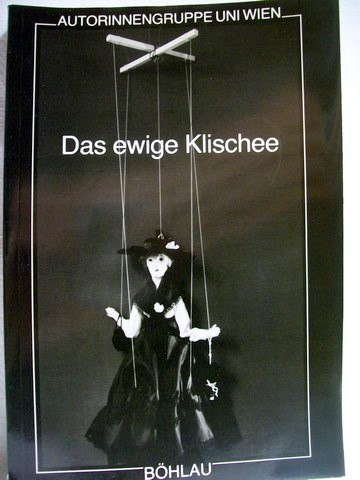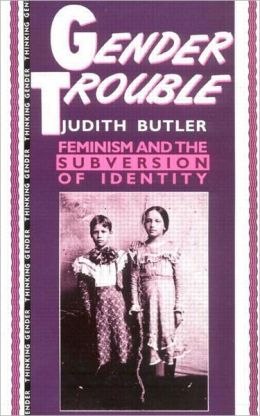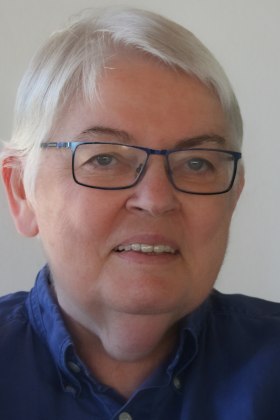Women’s and gender studies
For a long time – until the turn from the 19th to the 20th century – women were the exception in the hallowed halls of academia. This exceptional status challenged them to prove they belonged in the university. Elise Richter, one of the first female students, doctors and the first woman to habilitate at the University of Vienna, wrote in her autobiography: “As a woman I certainly gave as much as I received. I received the path, but I walked it, if I say so myself, in an exemplary manner”. Criticism of male dominated science was left to the next generations and a later time, in which the social and political conditions had changed. Therefore, the quantitative increase in the number of women in the tertiary educational sector in the 1960s and 1970s went hand in hand with a qualitative increase in academia.
How male is science?
In the middle of the 1980s, Karin Hausen and Helga Nowotny asked an important question as editors of their publication “Wie männlich ist die Wissenschaft?” (“How male is science?”) and set a metalogue in motion. They analyzed the production of science as well as the diverse conditions and experiences of people working in the academic field, who still had to overcome the stereotype of the scatterbrained professor disconnected from day-to-day matters and only living for science. These images show the myth of the incompatibility of science, which postulates that this extraordinary vocation can only be practiced by shutting out all other areas of life, making it implicitly exclude women, due to their societally ascribed lifeworld-context. Female academics felt the need to question and to study science’s practices and mode of operation. They worked in the area of social and academic critique and revealed the androcentric view that had steered the epistemological interest for centuries. Content and logic of numerous disciplines were analyzed in detail. The bipolar thought structures connected to the dissociation of gender characteristics – the construction of the superiority of the male-connoted intellect aiming to dominate female-connoted nature – came to light and visualized the close relationship between the gender order and knowledge systems.
The eternal cliché
In the early 1980s, the publication “Das ewige Klischee” (“The eternal cliché”) by the Autorinnengruppe Uni Wien (University of Vienna Authors’ Group) set an important example in the field of women’s studies. For the first time, gender was introduced into academic discourse as an essential question. The text addressed the situation of women in different historic periods and disciplines, the distribution of gender roles in the present, educational conditions, as well as questions of identity, representation and language.
At the beginning of the 1990s, significant developments took place in women’s studies, which had until that point been based on the two-gender-model – a phenomenon originating in the 18th century, which views women and men as fundamentally different beings. Contrasting the two gender groups of women and men as imagined homogenous groups proved to be too simplifying. A differentiated look at the mechanisms of power focused on the social construction of gender, in which social belonging as well as ethnic context are also involved.
Further developments were brought by the concepts of doing gender and doing difference, in which gender, together with all its constitutive dimensions, is constantly being reproduced. These connections made the reality-forming aspects and the real-life power of language and culture come to the forefront.
Gender Trouble
The concept of gender performativity was prominently and quite controversially discussed in the early 1990s, for example in Judith Butler’s “Gender Trouble. Feminism and the Subversion of Identity”, in which she postulates a discursive creation of gender. In her argument, she addressed the active character of performative speech acts through which gender is constructed.
Philosophically based on Judith Butler’s politics of the subversive, Queer Theory emerged. It deconstructed and destabilized classic gender identities and thus invited their rediscovery, setting into motion a resignification of the symbolic.
Whose Science? Whose Knowledge?
In “Whose Science? Whose Knowledge? Thinking from Women’s Lives” in the early 1990s, Sandra Harding – based on the theory that women would bring other experiences into the production of knowledge than men – addressed the importance of standpoints. Revealing standpoints became the state of the art for feminist academics and gender researchers: From which standpoint do I, as a scientist, ask my questions? What role do my heritage and cultural embeddedness play? In which part of the world? Which gender do I feel associated with and which desires do I feel? Which generation do I belong to? In short, what standpoint do I speak from?
Women’s studies, feminist research and gender studies brought about new attention to the relationship between the production of knowledge and its actors, but also to the paradigms of modern science, in which thought systems on the one hand present themselves and on the other hand are created. One of the many examples of how thought systems developed is how fact and fiction, fact and artefact, originate from the same linguistic root and only slowly began to diverge. This development laid the foundation for the separation of science and art, and of natural sciences and the humanities – a process which took place parallel to the strict separation of the male and female spheres in civil thought. This cannot be viewed as a coincidence.
Institutionalization
A group of professors at the University of Vienna encouraged the establishment of the scientific college “Frauen- und Geschlechterforschung (Gender Studies)” in 1994, among them social scientist Irmgard Eisenbach-Stangl, ethnologist and anthropologist Andre Gingrich, art historian Daniela Hammer-Tugendhat, Romance philologist Friederike Hassauer, philosopher Cornelia Klinger, sociologist and theory of science researcher Helga Nowotny, historian Edith Saurer, ancient historian Edith Specht, and linguist Ruth Wodak. Their goal was a mono- and transdisciplinary project with young academics aimed at supporting graduates. Other renowned academics from the field of gender studies, such as historian Gabriella Hauch, physicist and theory of science researcher Ulrike Felt, philosopher Alice Pechriegel, linguist Helga Kotthoff, sociologist Christine Goldberg, and political scientist Eva Kreisky subsequently also were involved. The fact that it took years until the project was realized tells a tale of the gender dimensions at the University of Vienna in the area of conflict between establishment and resistance, innovation and restriction.
A six semester-long study, published in 2004, showed the University of Vienna – and in particular the Faculty of Human and Social Science as well as the Faculty of Cultural Science and the Humanities – as the university with the largest range of courses on gender studies in all of Europe. Important work to achieve this goal had been done by the interuniversity Coordination Office founded in 1993, the Project Center for Women’s and Gender Studies as well as its continuation in 2002 as the Gender Research Office. Actors in this field include, among others, Anette Baldauf, Marlen Bidwell-Steiner, Ingvild Birkhan, Sylwia Bukowska, Waltraud Ernst, Therese Garstenauer, Evi Genetti, Michaela Haufner, Brigitta Keintzel, Sabine Kock and Sabine Strasser.
Since the academic year of 2006/07 the University of Vienna has offered the first Master’s program for gender studies in Austria. On the teaching level, a chair for gender studies was established in 2010, which has since been filled by biologist and theory of science researcher Sigrid Schmitz at the Faculty of Social Sciences, at the Institute of Social and Cultural Anthropology. With all these activities, the University of Vienna explicitly commits itself to the principles of anti-discrimination and gender equality formulated in its Development Plan.






